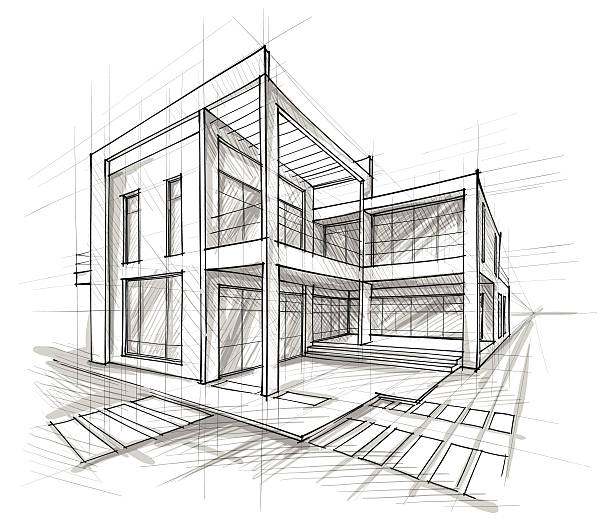Elevate Your Building Layout with the Proficiency of CDA Architects
Elevate Your Building Layout with the Proficiency of CDA Architects
Blog Article
Recognizing the Collaborative Refine In Between Designers and Engineers in Modern Construction Projects
The joint procedure in between designers and designers is important in modern-day construction projects, as it balances design intent with design usefulness. Discovering these characteristics reveals insights that can substantially impact task outcomes and general sector criteria.
The Relevance of Partnership
The joint harmony between architects and designers is necessary for the successful understanding of any construction project. This collaboration brings together distinctive experience and perspectives, enabling the combination of innovative design with useful design remedies. By interacting, architects and engineers can make sure that a job not only fulfills visual and useful demands yet additionally abides by security, sustainability, and budgetary restraints.
Partnership cultivates a shared vision, assisting in the placement of objectives and assumptions from the outset. This alignment is critical in resolving prospective difficulties and mitigating risks that can develop throughout the job lifecycle. A joint strategy enables for the efficient allowance of sources, optimizing both time and price.
The importance of partnership expands to the repetitive process of design and building, where comments from engineers can inform building choices, bring about more feasible and sustainable styles. Alternatively, designers can influence designers to think creatively regarding just how to achieve structural honesty without endangering imaginative intent. Inevitably, the joint partnership between architects and designers is not simply helpful; it is basic to the creation of top quality, practical, and cutting-edge constructed atmospheres that satisfy the needs of culture.
Communication Methods and Devices
Effective communication methods and tools are important for promoting collaboration in between engineers and engineers throughout the job lifecycle. Establishing clear channels of communication is important to ensure that all team participants are aligned with project purposes, timelines, and obligations. Regular conferences, both in-person and online, supply chances for stakeholders to review progression, address issues, and make educated choices.
Utilizing project administration software application, such as BIM (Structure Info Modeling) systems, boosts collaboration by making it possible for real-time sharing of layout adjustments and technical specifications. These devices assist in transparency, enabling architects and designers to imagine adjustments and analyze their effect on the general job.

Shared Objectives and Project Vision

Establishing common goals entails open dialogue and a complete understanding of each discipline's contributions. Engineers generally concentrate on layout intent, spatial relationships, and customer experience, while designers emphasize structural honesty, systems capability, and compliance with guidelines (cda architects). When these viewpoints are aligned, the result is a cohesive job that sticks to both creative goals and technological usefulness
Moreover, a well-defined job vision promotes liability amongst staff member, encouraging each participant to take ownership of their function in accomplishing the preferred result. Normal check-ins and joint workshops can better reinforce this commitment, permitting adjustments to be made as the project evolves. Ultimately, a shared vision not only enhances teamwork but also elevates index the quality of the final deliverable, leading to effective task conclusion.
The Duty of Modern Technology
Leveraging innovation has actually come to be important in improving cooperation in between architects and engineers. Building Info Modeling (BIM) stands out as an essential modern technology, allowing both architects and engineers to produce in-depth 3D designs that envelop layout intent and architectural honesty.
Moreover, cloud-based platforms enable seamless collaboration, allowing project stakeholders to gain access to and update job data from anywhere. This promotes a society of openness and responsibility, as modifications can be tracked and examined in real-time. Furthermore, mobile applications additional improve communication, supplying on-site teams with immediate access to project specifications and updates.
Arising modern technologies such as artificial knowledge and artificial intelligence are likewise beginning to contribute in anticipating analysis, assisting teams identify potential concerns before they develop. Eventually, the function of innovation in architecture-engineering partnership not only improves operations performances however likewise improves development, bring about more successful project outcomes. By welcoming these technical innovations, designers and engineers can guarantee a more natural and effective collaborative process throughout the building and construction lifecycle.
Study in Successful Collaborations
Numerous study show the extensive influence of effective partnerships between architects and designers on project results. One significant example is the cooperation on the High Line in New York City, where landscape engineers, engineers, and city coordinators interacted to change an abandoned railway into a lively public park. This multidisciplinary approach not just enhanced the aesthetic top quality but additionally guaranteed architectural safety and environmental sustainability.
An additional exemplary situation is the layout and building of the Sydney Music Hall. The partnership between engineer JÃ ¸ rn Utzon and structural designer Ove Arup exhibited innovative analytical. Their cooperation permitted the famous shell-like layout while addressing complicated design obstacles, ultimately causing a classic building masterpiece.
The Burj Khalifa in Dubai even more shows the value of collaborative efforts. cda architects. The integration of design and design proficiency allowed the job group to attain unprecedented heights while adhering to safety policies and visual vision
These instances emphasize the relevance of interaction, trust fund, moved here and shared objectives. In today's complex construction environment, such partnerships are vital to browsing difficulties and providing jobs that satisfy both practical and visionary goals.
Final Thought
Finally, the partnership between designers and engineers is important for the success of modern construction tasks. Reliable interaction strategies, a common job vision, and the integration of advanced innovations are vital components that facilitate this collaboration. By cultivating a society of responsibility and leveraging tools such as Structure Info Modeling (BIM), teams can navigate task complexities, guaranteeing that visual, useful, and sustainability goals are achieved. Ultimately, this harmony results in innovative and effective job outcomes.
Report this page